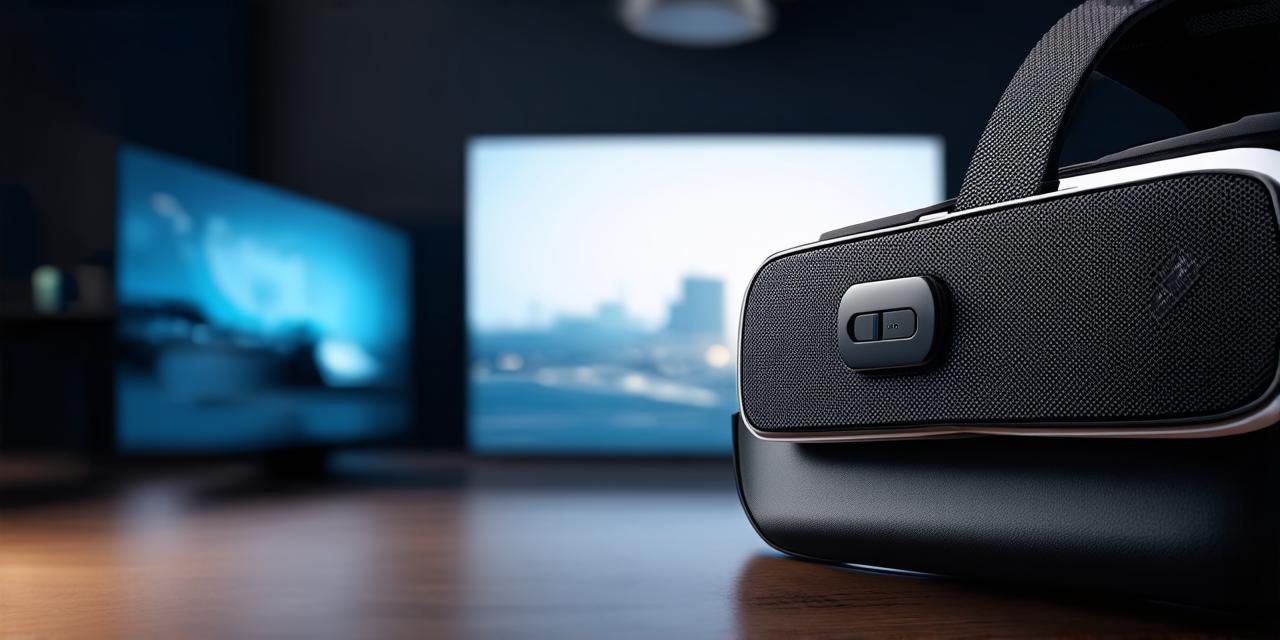Virtual reality headsets have become increasingly popular in recent years, and they offer an immersive and engaging way to experience virtual worlds. But how do these devices actually generate a 3D view for the user? In this article, we will explore the technology behind VR headsets and examine some of the key factors that determine the quality of the 3D experience.
The Basics of Virtual Reality
Virtual reality is a computer-generated simulation of a real or imagined environment that can be interacted with in a seemingly real way. This technology has been around for decades, but it was not until the advent of modern computing and advanced graphics processing units (GPUs) that it became practical and accessible to consumers.
Virtual reality headsets are one of the most common ways to experience VR. These devices consist of a head-mounted display (HMD) that tracks the movement of the user’s head and adjusts the view accordingly. This allows for a more realistic and immersive experience, as the user can look around and interact with virtual objects in a way that mimics real life.
The Technology Behind VR Headsets
There are several key components that make up a VR headset. These include:
- The HMD: This is the part of the headset that displays the 3D view. It typically consists of two screens, one for each eye, that are mounted to the sides of the head.
The tracking system: This component uses sensors and cameras to track the movement of the user’s head. This information is then used to adjust the view displayed in the HMD.
The graphics processing unit (GPU): This is the computer component that generates the 3D images and animations that are displayed in the VR environment.
The Role of Computer Vision in VR
Computer vision is a field of artificial intelligence (AI) that focuses on enabling computers to interpret and understand visual information from the world around them. In the context of VR, computer vision plays a critical role in generating a 3D view for the user.
One of the key techniques used in computer vision is stereoscopic rendering. This involves using two cameras to capture separate views of the same scene from slightly different angles. These images are then processed by specialized algorithms to create a 3D image that can be displayed in the VR headset.
Another technique used in computer vision is depth mapping. This involves using sensors and cameras to measure the distance between objects in the environment. This information is then used to create a more accurate 3D representation of the scene, which can enhance the realism and immersion factor of the VR experience.
Real-World Examples of VR Headset Technology
There are many different types of VR headsets on the market, ranging from high-end consumer devices to specialized professional equipment used in fields such as medicine, education, and gaming. Some of the most popular VR headsets include:
- The Oculus Rift: This is a high-end consumer VR headset that uses two high-resolution displays and advanced tracking technology to provide a highly immersive 3D experience.
The HTC Vive: This is another popular consumer VR headset that uses similar technology to the Oculus Rift, but has a slightly different design and user interface.
The Samsung Gear VR: This is a mid-range consumer VR headset that is designed for use with Samsung smartphones and tablets. It uses a single high-resolution display and advanced tracking technology to provide a decent 3D experience.
Case Studies in VR Headset Technology
One of the most well-known examples of VR headset technology is the development of the Oculus Rift. This device was first launched in 2016 and quickly became one of the most popular consumer VR headsets on the market. The Oculus Rift uses two high-resolution displays and advanced tracking technology to provide a highly immersive 3D experience.
One of the key features of the Oculus Rift is its use of stereoscopic rendering. This technique involves using two cameras to capture separate views of the same scene from slightly different angles, which are then processed by specialized algorithms to create a 3D image that can be displayed in the VR headset.
Another key feature of the Oculus Rift is its use of depth mapping. This involves using sensors and cameras to measure the distance between objects in the environment. This information is then used to create a more accurate 3D representation of the scene, which can enhance the realism and immersion factor of the VR experience.
Conclusion
Virtual reality headsets have come a long way since their early days, and they now offer a highly immersive and engaging way to experience virtual worlds. The technology behind these devices involves a combination of advanced tracking systems, high-resolution displays, and specialized algorithms that are designed to create a 3D view for the user.
롤 모스크바 마사지 가격 비교 웹사이트 만들기
- 프로젝트 설정: 새로운 폴더를 생성하고, 그 안에 index.html, style.css, script.js 파일을 추가합니다.
- HTML 코드 작성: 제목과 메인 컨테이너 태그를 작성합니다.
- CSS 코드 작성: 전체 레이아웃을 정의하고, 검색창과 결과 리스트 박스에 스타일을 적용합니다.
- JavaScript 코드 작성: API를 호출하여 데이터를 가져오고, 검색 결과를 표시하는 함수를 작성합니다.
- 테스트 및 디버깅: 코드를 확인하고, 에러를 해결합니다.
- 프로젝트 배포: GitHub에 업로드하고, Netlify나 Heroku와 같은 서비스를 사용하여 웹사이트를 배포합니다.
